
When you think about search, what comes to mind?
I bet you are thinking “Google”.
But there is more to search than Google. And even with Google, if you want to succeed you have to think beyond traditional SEO and PPC ads because everyone is using traditional tactics.
You must think outside the box. And that’s what I am going to help you do today.
So, let’s first go over the trends we are seeing, and then we can go over how you need to adapt.
Search trends
Although no one really talks about search like they used to, people still find it extremely valuable.
According to an MIT study, search engines were valued more than 2x as much as email, nearly 5x as much as online maps, and +50x more than social media.
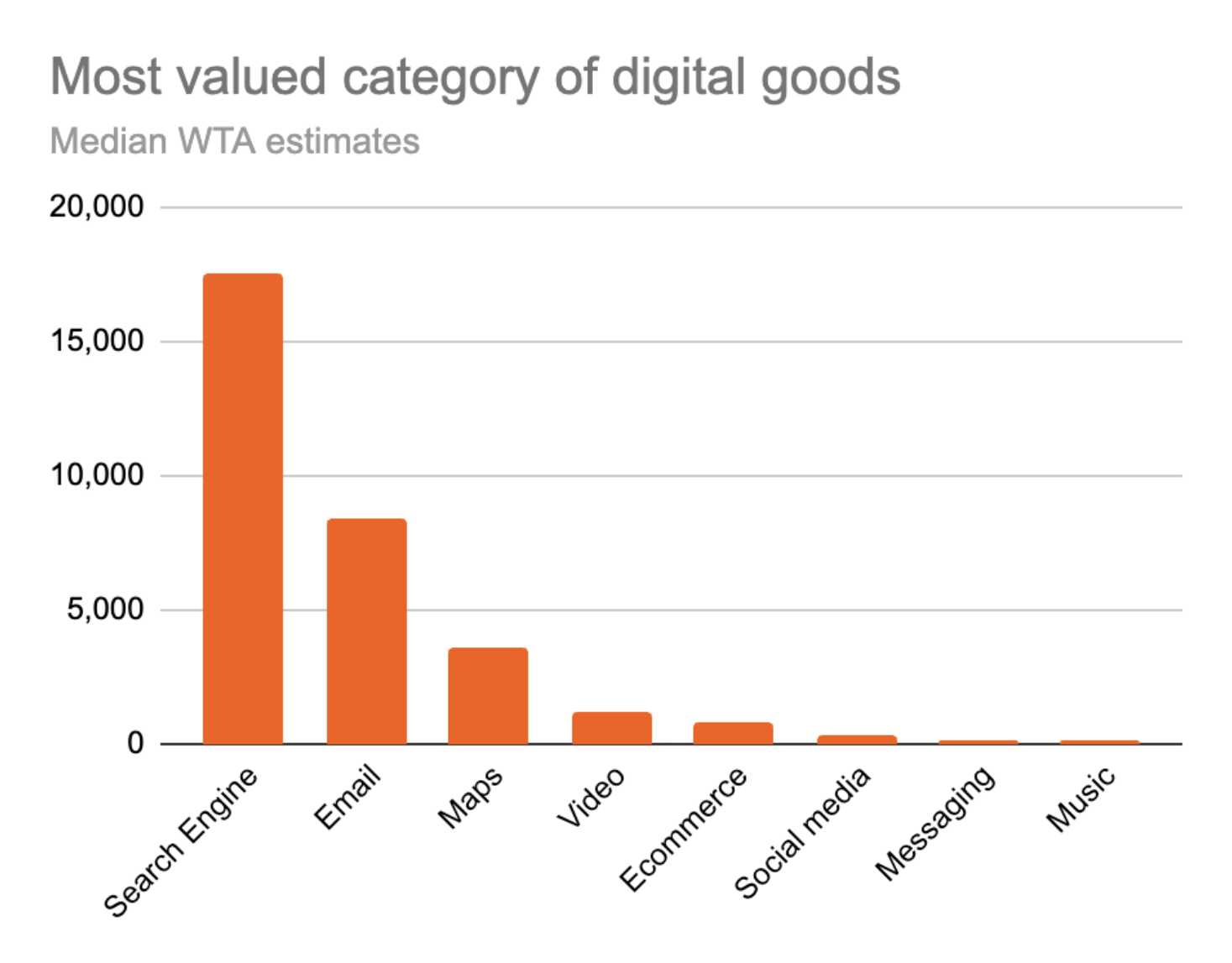
As marketers, this is important to keep in mind because we tend to focus on shiny objects. You know, the channels everyone is talking about.
But a lot of the old channels out there like search engines and email are still very effective and people place more value on them.
And here is a fun fact that you probably didn’t know about search either… 15% of all searches that take place on Google each day have never been searched before.

That’s kind of crazy to think about knowing that Google has been around for a while and so has SEO.
And according to Google people go through a handful of emotions as they search that lead up to a purchase.
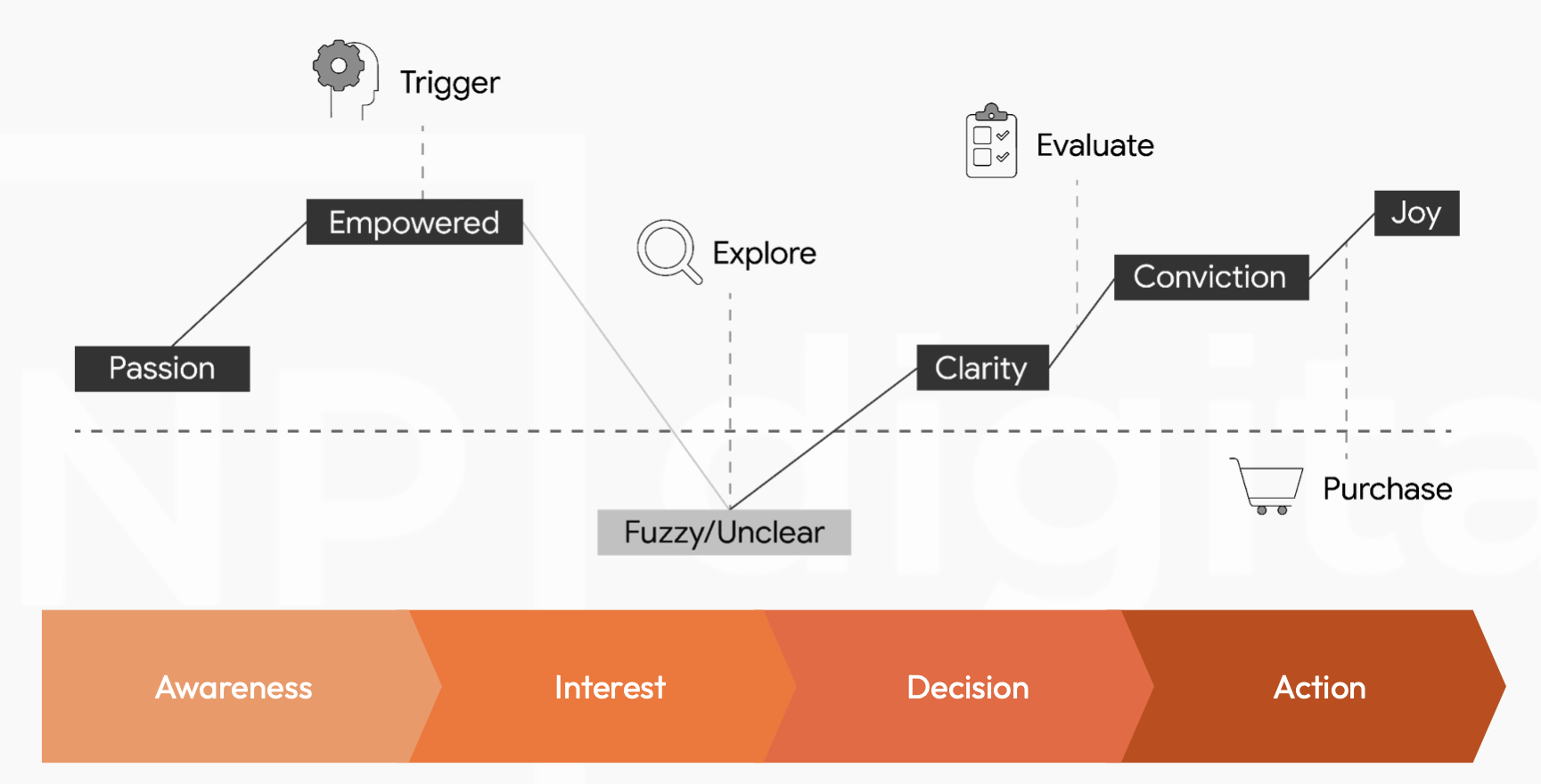
So, what are marketers doing? Well, they create tons of content to appeal to each of the above stages in hopes of landing a customer.
They know it’s effective too because Google even tells you… 85% of people will purchase from brands that provide trustworthy information.
But marketers forget is that 63% won’t buy from brands that provide irrelevant information.
So, if your content doesn’t help people or even worse is off, it’s going to hurt you over helping.
Now when I first started off in the digital marketing world 22 years ago marketers didn’t have this problem.
When you created content, you stood out for one simple reason… there was a lack of content. But these days that isn’t the case.
Just look at the term auto insurance. There are 165,000 searches in the United States each month, but over 1.1 billion results.
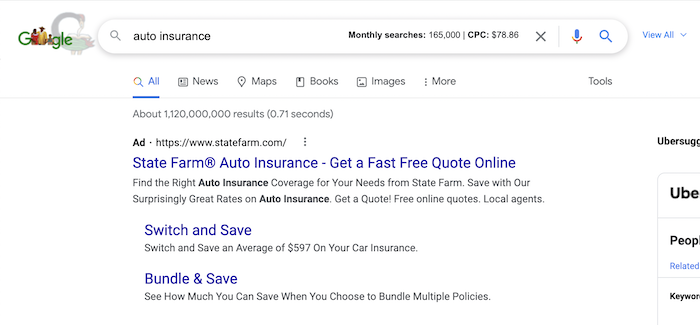
Do you think we really need anyone else to write content on that subject? Not really unless something drastically changes within that industry.
So when you create content on a keyword you want traffic from, what do you think is going to happen?
There may be a slim chance that you have something new to say that no one else has talked about… the reality is you are going to regurgitate what everyone else is already talking about.
It went from being where your website was “waldo” and you stood out from the crowd, but now everyone is waldo and it is hard to tell one site apart from another.

So how do you stand out? Well, we will get to that in a bit, but let’s go over a few more trends. 😉
Google isn’t the only player in town
I want you to do a fun exercise. Think about all the platforms you use on a regular basis and ask yourself if they have a search feature.
Search is everywhere… it’s not just on Google or Bing.
Perform a search on each of the platforms you use on a regular basis. For fun let’s search for “Amsterdam”.
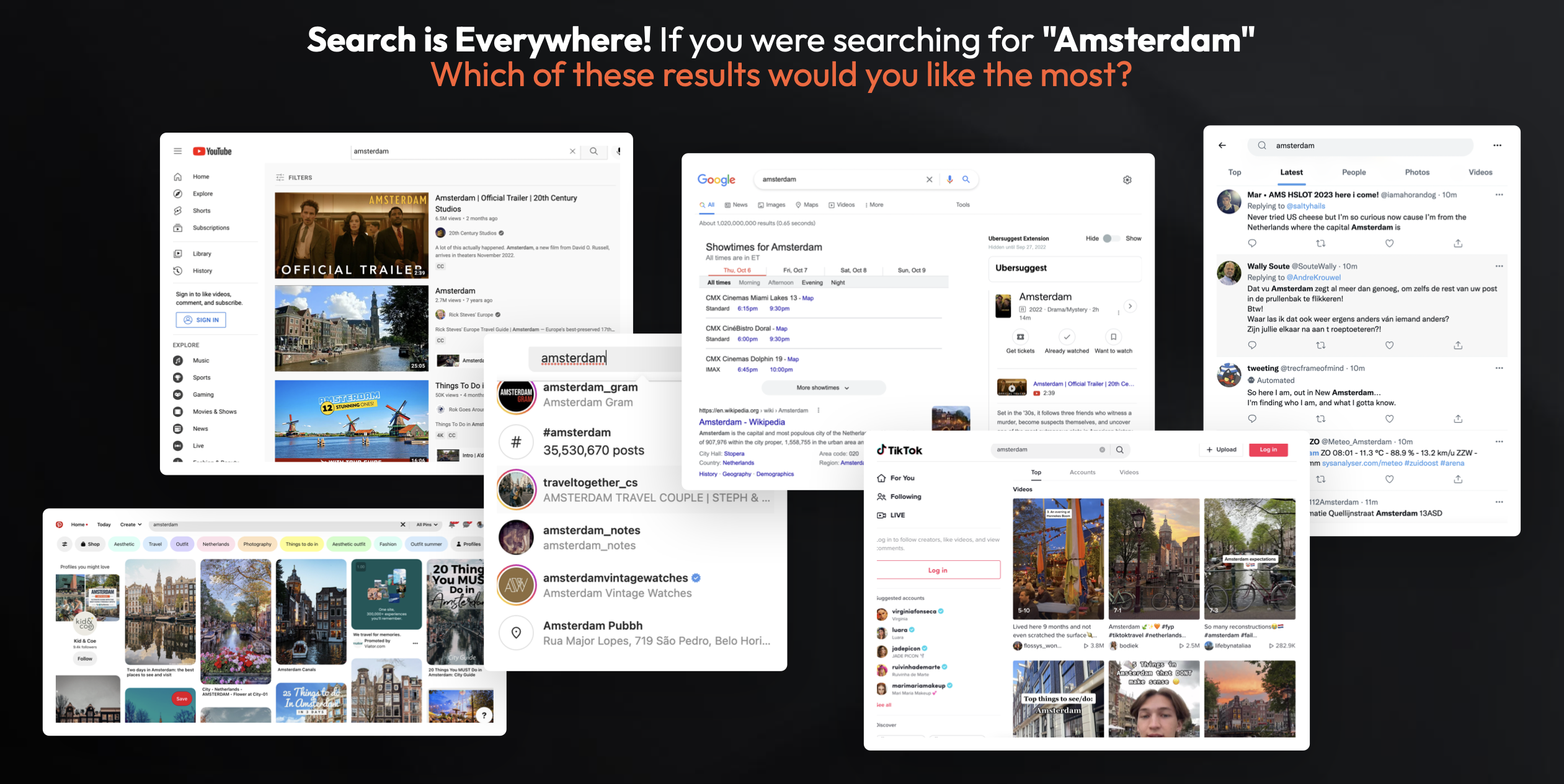
On Booking.com you may find hotels in Amsterdam. On Google you may find information about the city.
On YouTube, you may find videos about the movie and on Pinterest, you may find images from the city. And on Instagram, you may find pictures of restaurants and food dishes people ate in Amsterdam.
But here is where it gets interesting. According to Prabhakar Raghavan, SVP at Google, young people are turning to Instagram and TikTok for search over Google.
In our studies, something like almost 40% of young people, when they’re looking for a place for lunch, they don’t go to Google Maps or Search… they go to TikTok or Instagram.
It shows in the data too. Just look at data from an average minute on the Internet.
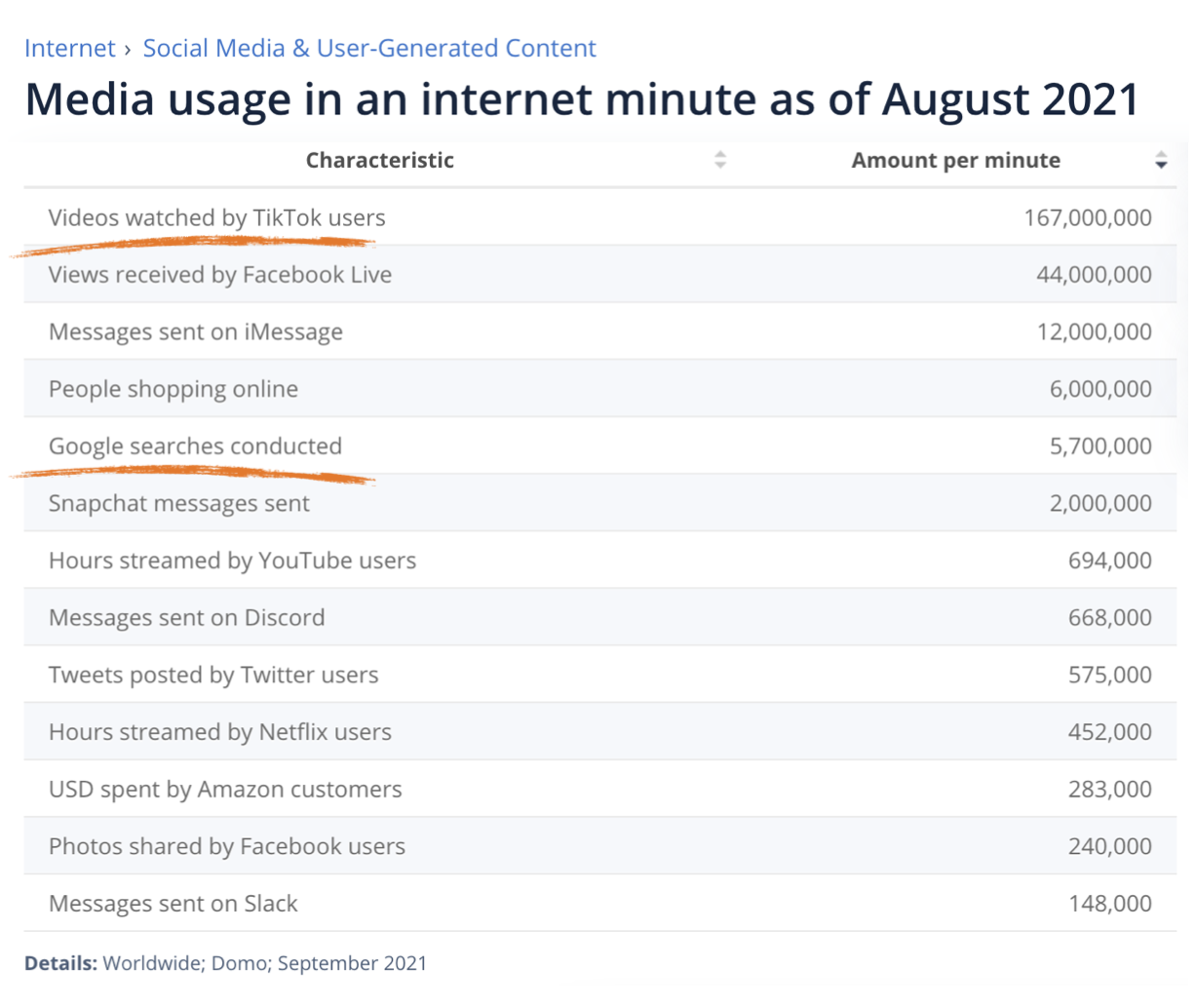
Every minute 167 million TikTok videos are watched, versus only 5.7 million Google searches.
It’s not just TikTok either, people are spending more time on Facebook Live, iMessage, and even shopping online.
To reinforce this trend, just look at the top 10 searches on Google.
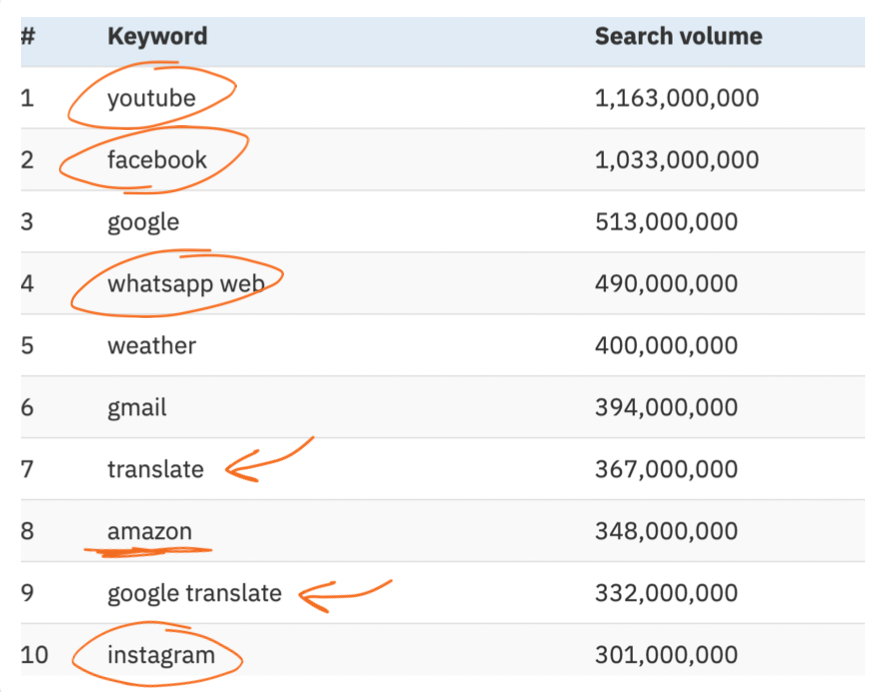
Notice a pattern?
4 of the top 10 searches are social networks.
7th and 9th searches emphasize globalization. If you haven’t thought about global SEO, check this out.
And the 8th most common search emphasizes shopping and the boom of eCommerce.
I know this is a lot of data, but if you ignore trends, you’ll end up going extinct.
Just look at what happened to Blockbuster, Netflix ate their lunch.
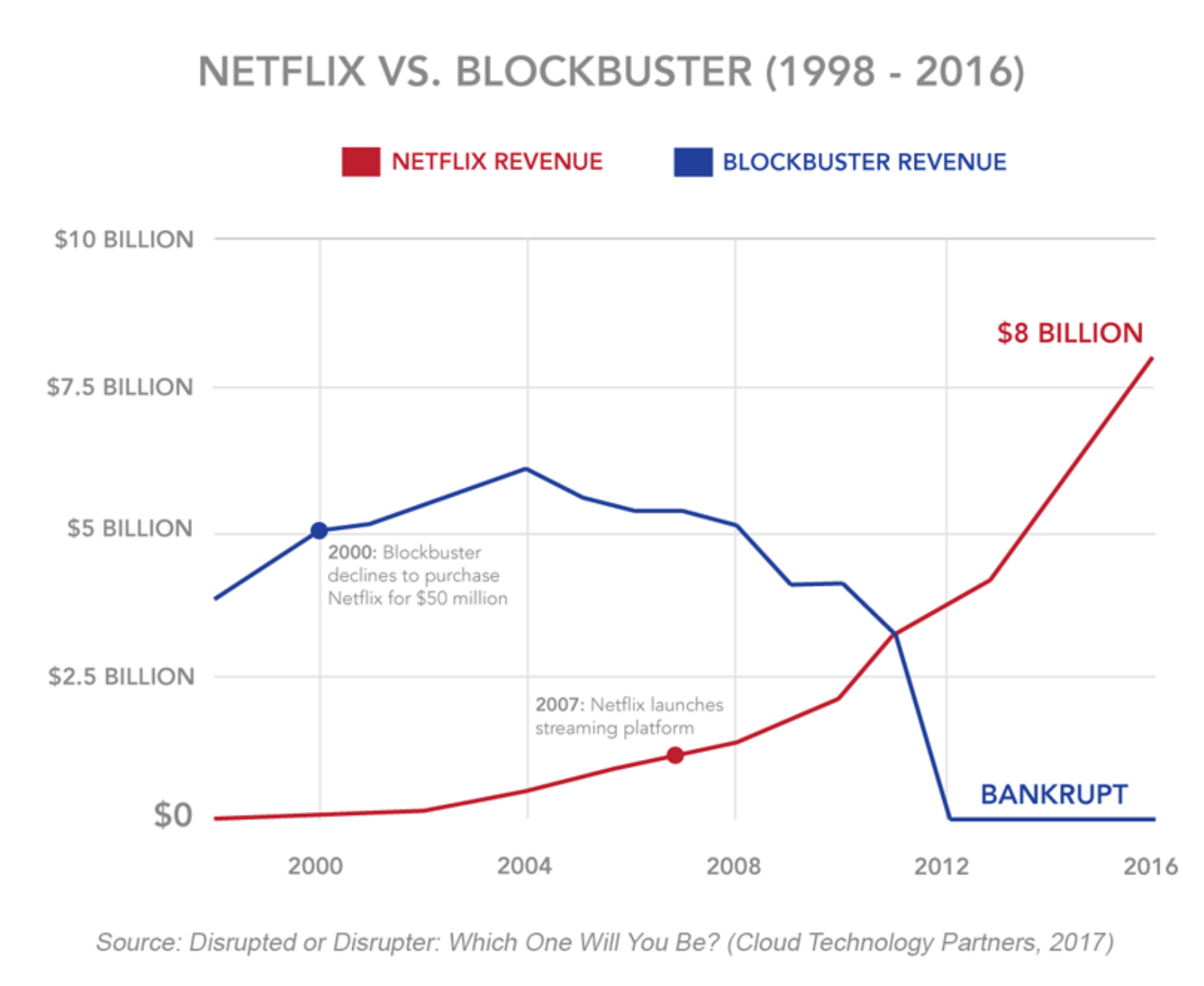
Or how US teens for the first time prefer YouTube over Netflix.
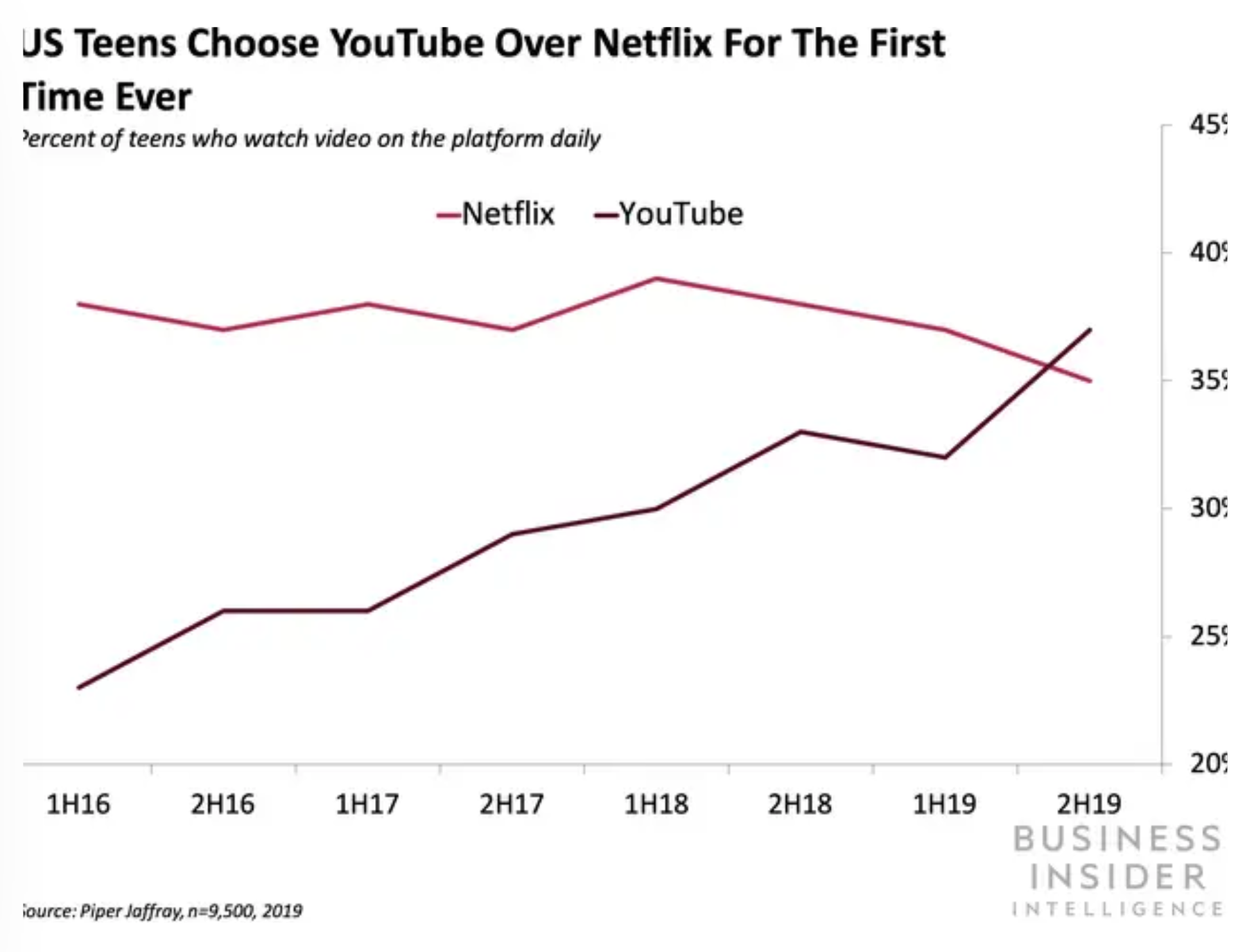
This may be one of the reasons why YouTube’s ad revenue is almost matching Netflix’s.
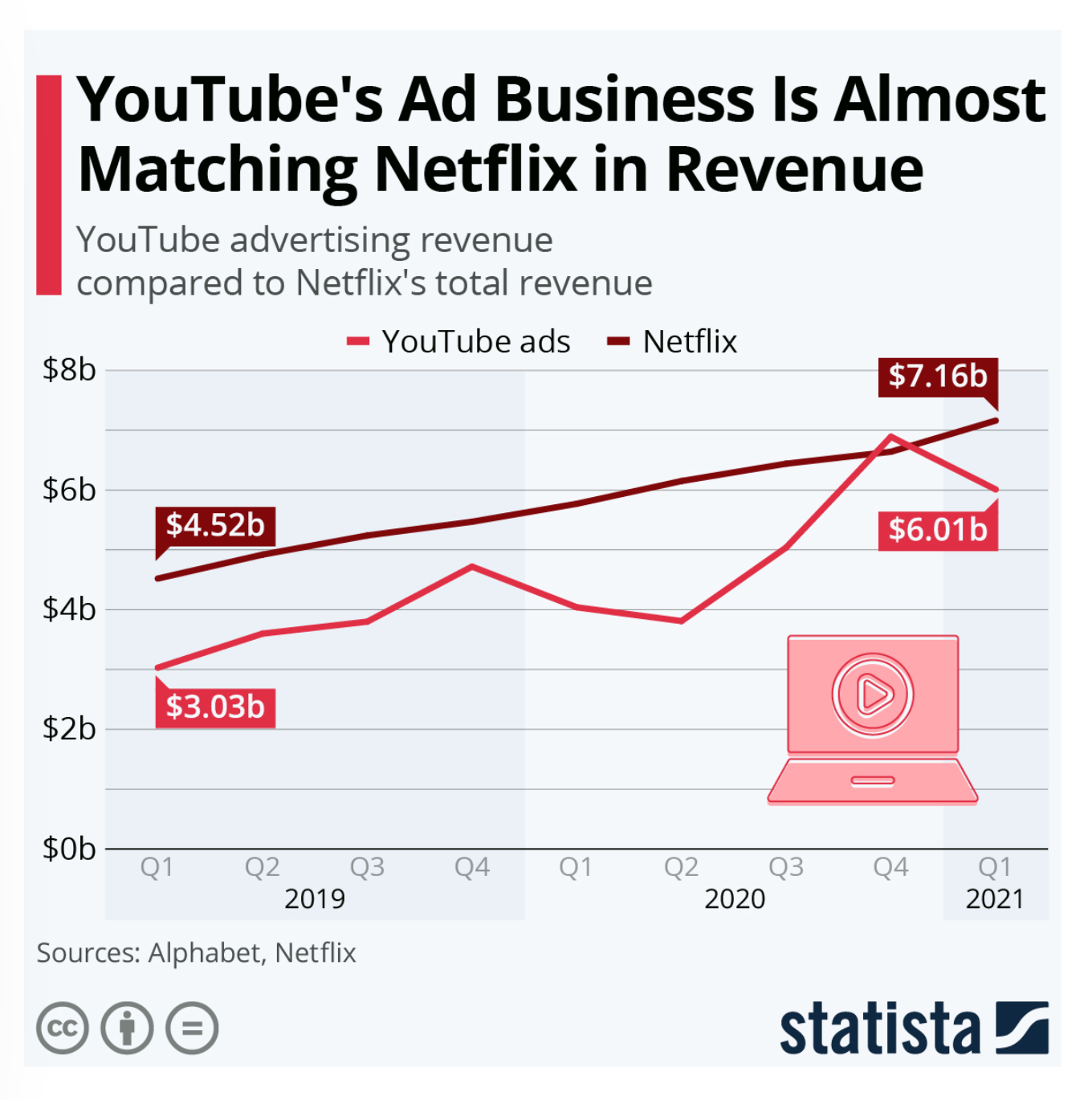
If you don’t pay attention to the trends out there and adapt to what people want, you will lose.
Heck, even Google pays attention to trends and they try to adapt.
Remember when they created the social network Google Plus? It didn’t work out, but they tried.
And now they have web stories, which will help them compete with Instagram and TikTok. Just like how they also created YouTube Shorts too.
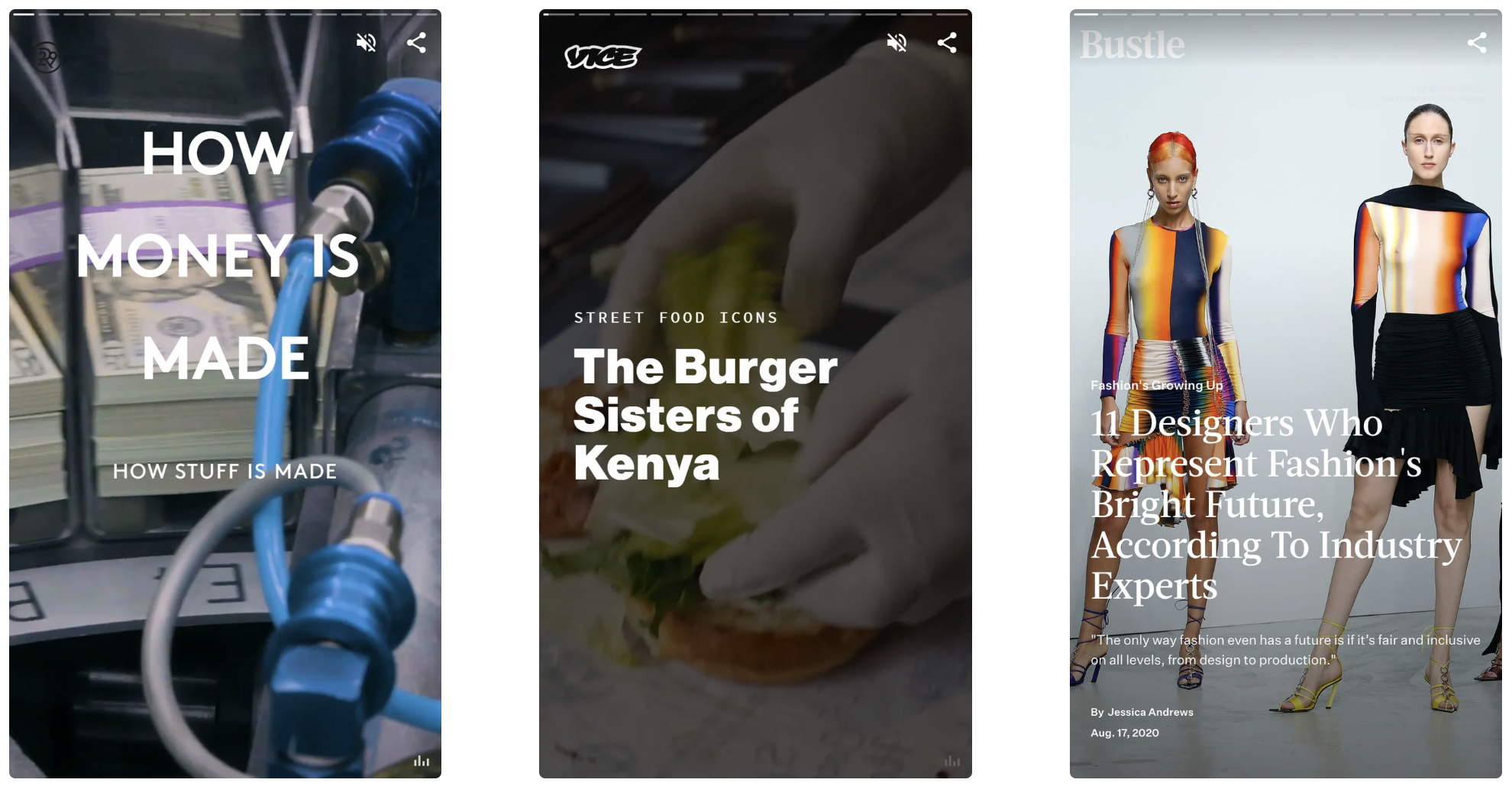
I don’t think web stories will work as people don’t really see Google as a social network, but time will tell.
So, where’s the opportunity?
There are a few opportunities for you if you want to stand out from all the other waldos and be able to compete in a way that doesn’t mean just spending more than others as that is unrealistic.
Let’s go over them.
Go after the 15 percent of searches that have never been searched before
Remember how we talked about that earlier?
Using most SEO tools out there doesn’t solve this because they all focus on “popular” keywords.
Hence, they show keyword volume. But there is more to the search universe than bottom-of-the-funnel, middle-of-the-funnel, or top-of-the-funnel search terms.
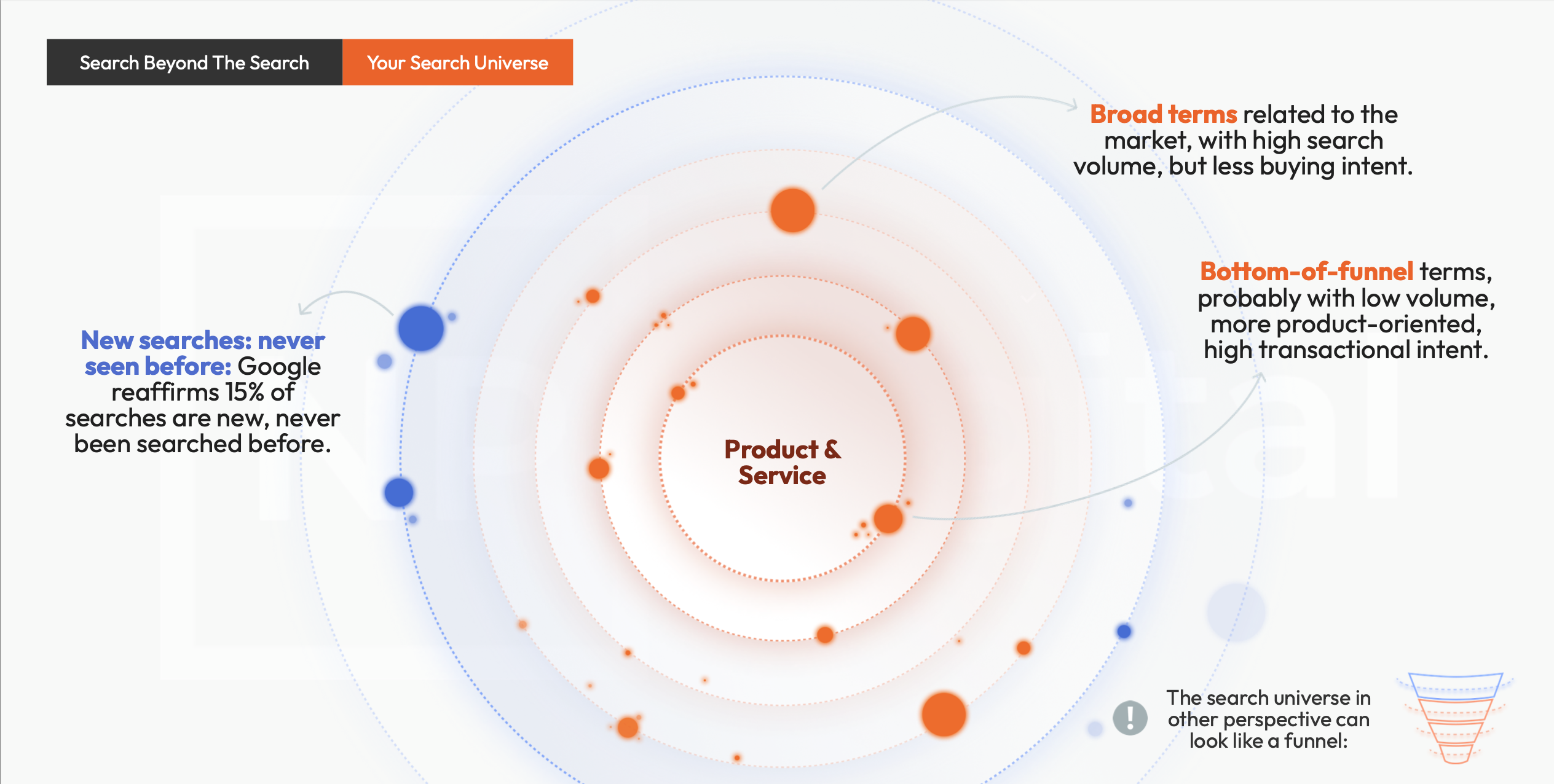
What about a strategy that involves going after terms that are on the cusp of becoming popular and people are starting to search for them?
These terms will be easy to rank for and will become more popular over time.
But how do you find them if SEO tools are focusing on already popular and sadly competitive terms?
You go after Google Suggest terms. These are terms that people are searching for that don’t really show up in most tools.
An easy way to get a list of all the Google Suggest terms is to use tools like Answer the Public.
Just type in a term related to your space, like “digital marketing”, and you will get a list of all the up-and-coming terms people are searching for.
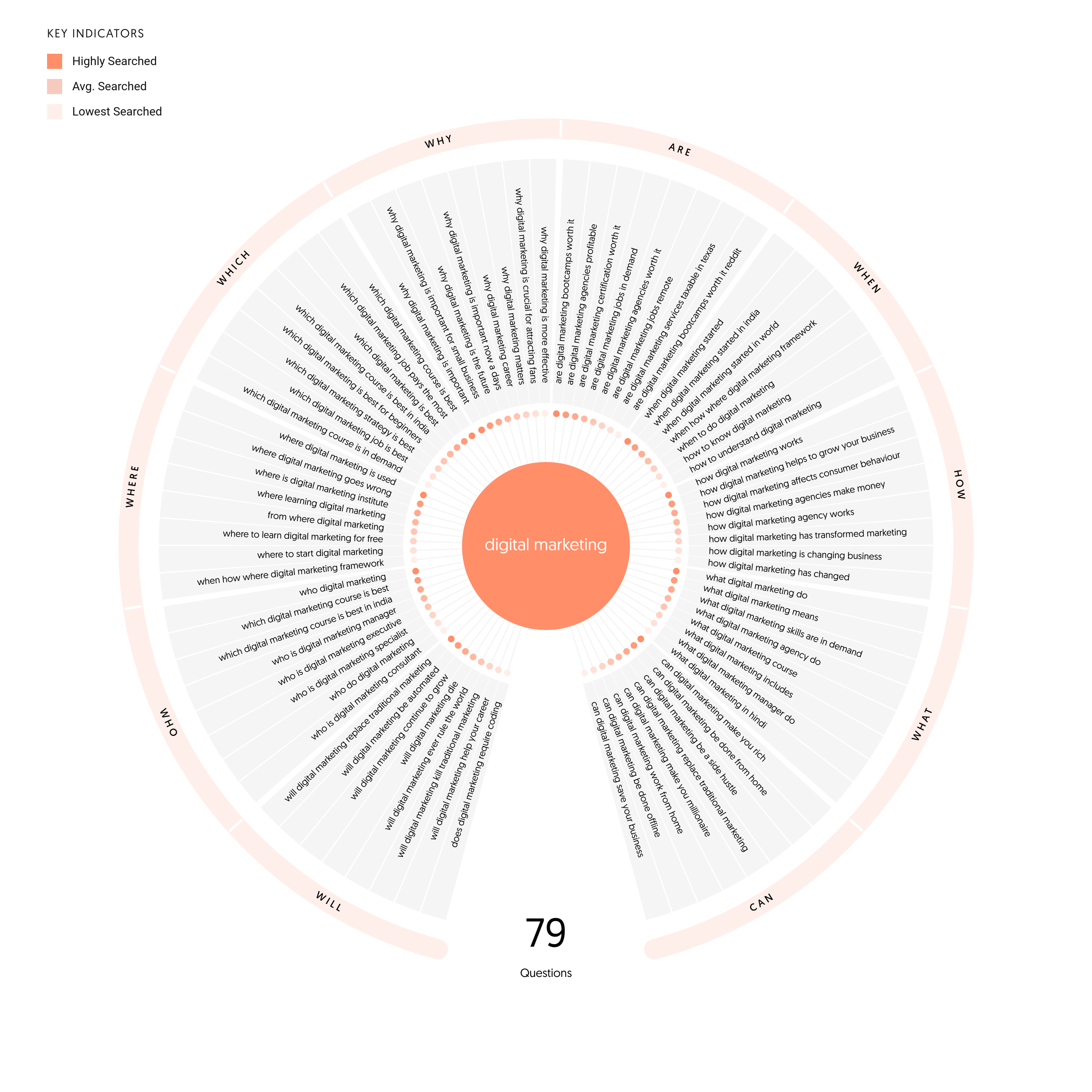
Answer the Public will give you hundreds of keywords to target based on questions people are asking, prepositions, comparisons, and overall, what Google is showing as up-and-coming terms.
Take an omnichannel approach
You may have heard me talk about this one before but you don’t have a choice but to be on all the platforms these days.
It doesn’t matter if the algorithms favor you or not… getting some coverage is better than none.
Plus, omnichannel marketing helps with the rule of 7. When someone sees or interacts with your brand 7 times, they are more likely to evangelize and buy from you.
Now I don’t want to bore you to death with hundreds of marketing tactics for each platform, so I am going to break down 1 thing that each platform loves that you can use to get more traffic, views, and engagement.
And to be clear this one thing that I am giving you for each platform, should have a much bigger impact than other tactics, hence I focus a lot of my efforts on the exact tactics I break down below.
- YouTube – this platform focuses on the first 24 hours. Videos that do well in the first 24 hours are more likely to rank higher and keep getting suggested. Right when your video goes live on YouTube promote it through push notifications, email blasts, and SMS messages.
- LinkedIn – they really love comments more than anything else. Right when you post anything on LinkedIn, round up people in the first 4 hours that have similar audiences and have them leave a comment. The comment needs to be engaging and be at least 12 words long. For example, if I posted on LinkedIn about 5 ways to rank higher on Google, I may have a buddy or mine leave a comment on a 6th strategy to rank higher on Google.
- TikTok – similar to LinkedIn they love comments. But the comments need to be engaging. For example, I posted a TikTok video on how blogging is more competitive than podcasting and that marketers should leverage podcasts. Someone left a comment on how I was wrong, even though the stats and data backed up my point. This created more controversy which caused over 138,000 views. So have people leave comments similar to what you would do on LinkedIn and ideally right when your video comes out.
- Instagram – they have seen a 17.6% decrease in live video content yet users prefer live video over reading a blog post. And the demand for it is expected to grow 15x from what it was in 2022. If you create live videos on Instagram with other influential members and you make sure your content is amazing, it will help you get more reach which leads to more followers, and then when you post other forms of content you’ll find that it will perform better. So go live at least once a week.
- Google – they love brands. As the ex-CEO once said, “brands are the solution, not the problem. Brands are how you sort out the cesspool.” An easy way to create a bigger brand is to release free tools on your website. It keeps people coming back and searching for your brand name, which will increase your overall rankings over time. You can find free tools that you can white label and put on your site from Code Canyon.
- Facebook – they want you to create longer-form videos. Videos over 5 minutes long on my page generate on average 268% more views. To see if that pattern held for others, we analyzed 939 other company profile pages and found that their videos over 5 minutes generated 81.39% more engagement.
Follow the Peak-end-rule to build a brand
I talked a little bit about brand building earlier about how Google loves brands. And you can release free tools to help you build a brand.
That’s a great tactic to help with SEO.
But brands really are the future. Just look at Nike, more people search for the term “Nike” than they search for the term “shoes” which is crazy considering so many companies offer shoes.
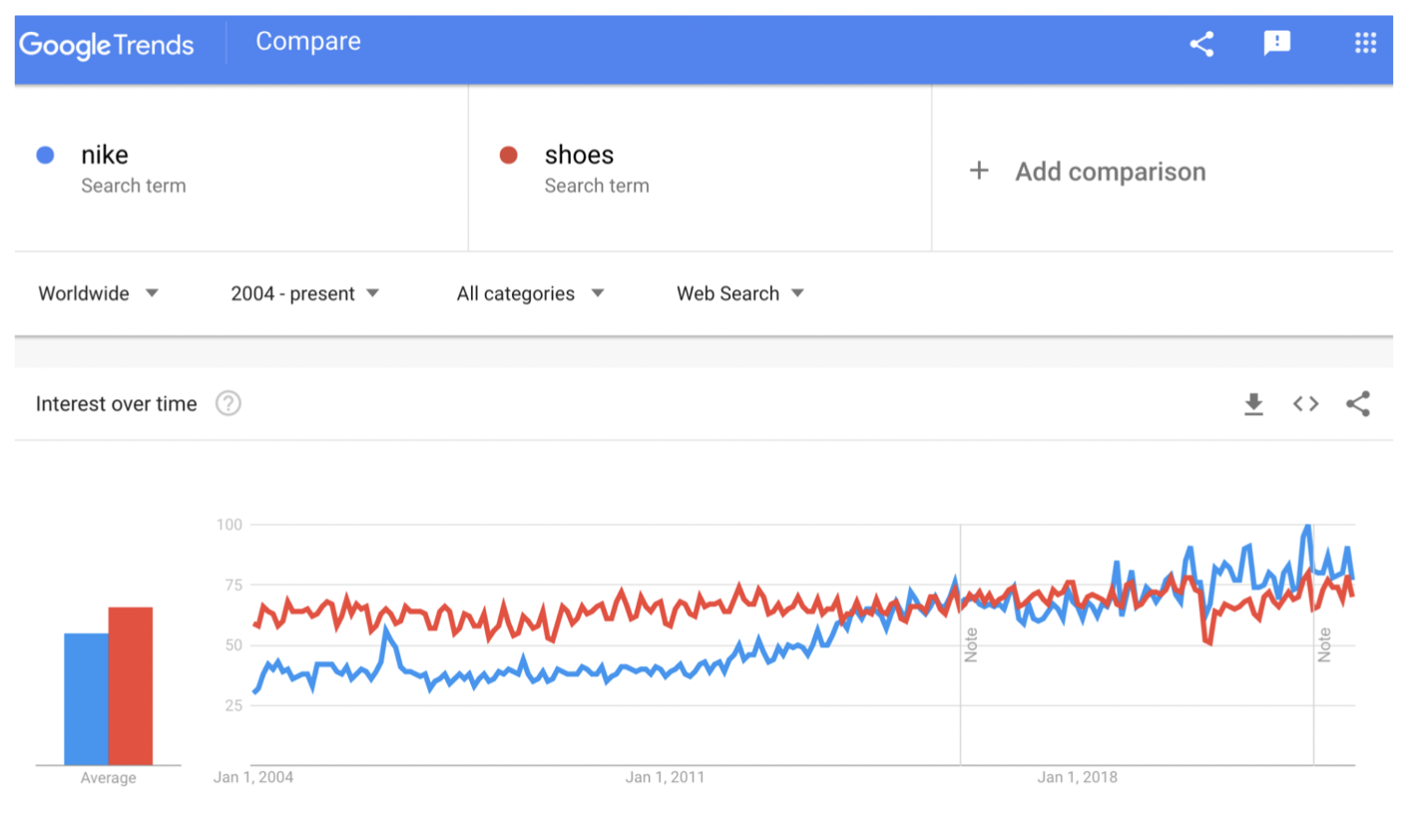
You create a great brand by building an amazing product or service. But that is just the start of it.
It really comes down to how people emotionally connect with your brand. And this involves the Peak-end-rule.
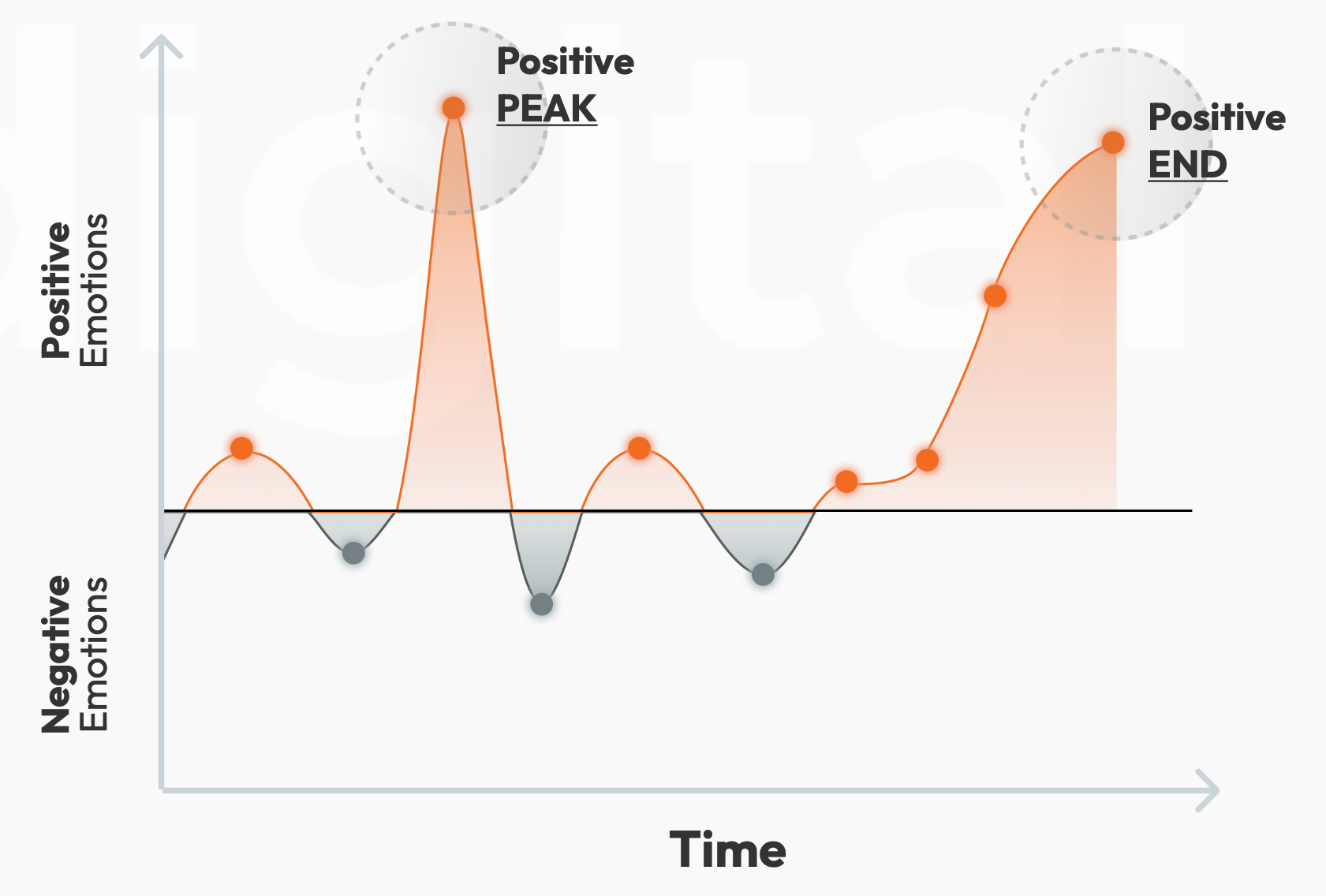
Typically when people work with your brand they have positive and negative experiences. You want to make sure they typically have a good experience when they first start using your product and service. You also want to make sure towards the end they also have an amazing experience.
A simple example of this is riding a bike. When a child first gets a bike they are filled with joy and excitement and it creates a great first peak. But as they start riding their bike they may fall a few times and it can create negative peaks. But once they get the hang of it, they are off to the races, having fun and not falling, which creates a positive end peak.
With your product or service, continually survey your customers and figure out what you can do to continually delight them. It’s the best way to figure out how you can create those emotional peaks.
That’s what builds an amazing brand.
Conclusion
I love Google. It’s a big part of my business at my ad agency NP Digital.
But we don’t stop with Google. From social media to email marketing to CRO… there are many marketing channels that you should consider.
And when it comes to search, keep in mind search is everywhere. From Google to YouTube to TikTok… search is everywhere. Heck, my father-in-law does SEO on his Airbnb listing as people “search” when they are on Airbnb.
But if you want to stand out from the crowd and not be another Waldo, focus on the 3 main things I broke down above.
So, what do you see as the biggest opportunity?
from Neil Patel https://ift.tt/q4MavmN

No comments:
Post a Comment